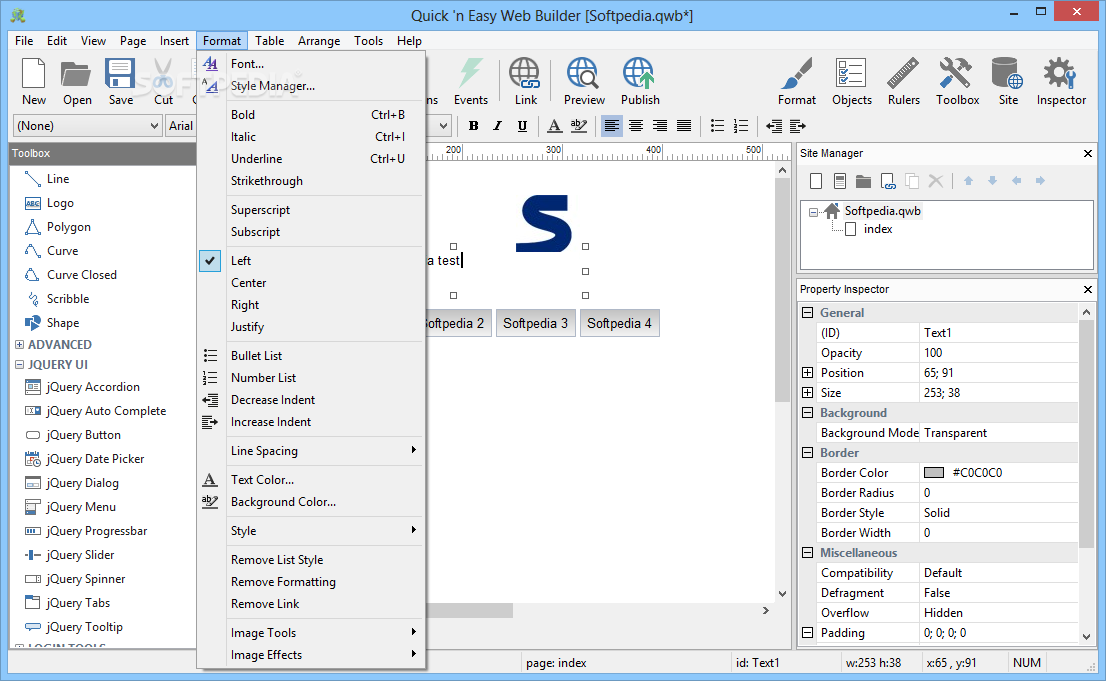

When the data binder binds to an instance of the Gadget class it will check to see if there are request parameters with names compressedShape and expandedShape which have a value of "struct" and if they do exist, that will trigger the use of the StructuredShapeEditor. For example if you have an incoming request such as:

Quick n easy web builder 2.3.5 update#
If you have a one-to-one or many-to-one association you can use Grails' data binding capability to update these relationships too. Fortunately, Grails also makes it easy to protect against such attacks - see the section titled "Data Binding and Security concerns" for more information.ĭata binding and Single-ended Associations Just because the form in your UI doesn't submit all the properties, an attacker can still send malign data via a raw HTTP request. In other words, they will bind all non-transient, typed instance properties of the target object, including ones that you may not want bound.

These forms of data binding in Grails are very convenient, but also indiscriminate. A blank String is any String such that the trim() method returns an empty String.

The order of events is that the String trimming happens and then null conversion happens so if trimStrings is true and convertEmptyStringsToNull is true, not only will empty Strings be converted to null but also blank Strings. Louis' respectively, params would include entries like these: For example, if a request includes request parameters named and with values 'USA' and 'St. The params object that is available in a controller has special behavior that helps convert dotted request parameter names into nested Maps that the data binder can work with. 'players': ]Īssert album.title = 'The Lamb Lies Down On Broadway'Īssert = 'Steve Hackett'Īssert = 'Peter Gabriel'Īssert = 'Tony Banks'ĭef updatedBindingMap = ': ,Īssert = 'Anthony George Banks'Īssert = 'Phil Collins' See the following code:ĭef bindingMap = [title: 'The Lamb Lies Down On Broadway', When binding to a Map the structure of the binding Map is the same as the structore of a Map used for binding to a List or a Set and the index inside of square brackets corresponds to the key in the Map being bound to. * found in the database, then a binding error will be created and associated If a Album with the specified id cannot be * from the database by id, the Album will be added to albums and will be updated * cases if the Album cannot be found in albums then the album will be retrieved * an id of 4 and set its title to 'Selling England By The Pound'. * to 'The Lamb Lies Down On Broadway' and will find the Album in albums that has * This will find the Album in albums that has an id of 9 and will set its title * They do not correspond to the order of elements in albums because albumsĭef bindingMap = ': * values that can be anything as long as they are unique within the Map. * The value of the indexes 0 and 1 in albums and albums are arbitrary When updating existing elements in a Set the Map being assigned to the Set must have id elements in it which represent the element in the Set being updated, as in the following example:
Quick n easy web builder 2.3.5 code#
In the code example above, if albums were a Set instead of a List, the bindingMap could look exactly the same but 'Foxtrot' might be the first album in the Set or it might be the second. Note that when binding to a Set the structure of the Map being bound to the Set is the same as that of a Map being bound to a List but since a Set is unordered, the indexes don't necessarily correspond to the order of elements in the Set. That code would work in the same way if albums were an array instead of a List. 'albums': ]Īssert = 6Īssert = 'Nursery Cryme'Īssert = 7


 0 kommentar(er)
0 kommentar(er)
